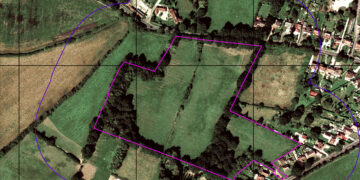A MOTHER from Lower Earley intentionally took her life when she was struck by a lorry on the M4 last year, an inquest has heard.
Andrea Denise Roche, 66, died in the early hours of October 11 after she left her home in Felthorpe Close, carrying two landline telephone handsets, and made her way onto the hard shoulder of the motorway between junction 11 and junction 10, close to where the new A327 bridge was being constructed.
The coroner, Peter Bedford, heard evidence about how Mrs Roche had suffered a long history of mental health problems, stemming from a drug overdose and diagnosis of psychosis in 1969. She went on to be diagnosed with bipolar affective disorder, which caused a series a manic episodes leading to her being sectioned on several occasions.
The inquest, held at Reading Town Hall on Tuesday, heard from mental health practitioners how Mrs Roche was prescribed a number of different antidepressant medications over the years, but was often reluctant to take them, especially when her mood was low.
Her social worker, Matthew Neads, told the court how he would visit Mrs Roche at her home to check how she was doing, and she trusted him enough to confide personal information to him.
Stable
He told the coroner that Mrs Roche would present various relapse indicators, including aggression, low moods and feelings of guilt, but in the days leading up to her death she seemed stable.
He said that when he saw her for the final time, she was dressed appropriately, her hair and make-up were done, and her house was tidy, suggesting that she had not slipped into a depressive state. He said she accepted the need to take her medication, and sent him to the chemist to pick up her prescription, promising to take her tablets later that evening.
He said: “I took her word, I believed what she was saying to me because I knew her so well. There was nothing to suggest that she was lying to me.
“Her mood was low, but it wasn’t the worst she had been. Her mood had not improved since the last time I’d seen her, but it hadn’t deteriorated either.”
Sadly, for reasons unknown to her family, Mrs Roche left her home that night and made her way to the motorway, approximately 30 minutes’ walk from her house, and stepped in front of a lorry at around 2.50am.
The lorry driver, Ivano Bonci, recalled how he had started work at 1.15am and after carrying out all the necessary checks to his vehicle, he set off on the motorway. He said he put the vehicle into cruise control, which would maintain the speed at around 54mph.
‘It happened really quickly’
He said that the motorway was fairly clear, which was typical for that time in the morning, the weather was dry and the visibility was good. He was driving with dipped headlights as he approached the A327 bridge, and he recalled how he suddenly noticed a shadow rush out from the hard shoulder.
He said: “At first I wasn’t sure if the shadow was just lights bouncing off the bridge. It all happened really, really quickly. Between seeing the shadow and hearing a loud bang was probably one or two seconds at the very most. There was no time to react.”
Mr Bonci described the shadow to be in an upright position, suggesting it was a person rather than an animal. When he heard the bang, he began to panic, only slowly braking before he began to realise what had happened, at which point he decreased his speed and pulled over onto the hard shoulder.
He said: “I noticed a number of other vehicles had pulled in behind me. I rushed back to one of the lorries, spoke to the driver in his cab and asked if it was a pedestrian or an animal, and he told me he thought it was a pedestrian.”
Forensic evidence from the scene concluded that Mrs Roche had been struck by several vehicles, but it was likely the initial impact from the Mr Bonci’s lorry would have killed her. Mr Bonci’s lorry was found to be in perfect working order, and he passed all tests for alcohol, drugs and an eyesight test.
‘What we can’t say is why’
Summing up, Mr Bedford said that he had to be sure ‘beyond all reasonable doubt’ that Mrs Roche intended to take her own life, but could not be drawn on the question of why she came to that decision.
He said: “I think the evidence allows me to conclude that she took her own life while suffering from bipolar affective disorder, because that is a key element.
“I have done my best to determine the facts as to what happened on October 10. Nothing I have identified causes me any concern of any shortcomings, failures or any missed opportunities.
“What we can’t explain is why she left home in the middle of the night, carrying two telephones, and made her way past many obstacles onto the motorway. This is not a route that you could accidentally take.
“It is not clear from the evidence where she accessed the motorway, but what we do know is that she waited until the very last moment to step out in front of Mr Bonci’s path, it is clear to me that she picked that moment.”
Mr Bedford recorded that Andrea Roche took her own life while suffering from bipolar affective disorder.
- Samaritans (116 123) operates a 24-hour service available every day of the year. If you prefer to write down how you’re feeling, or if you’re worried about being overheard on the phone, you can email Samaritans at [email protected].















































